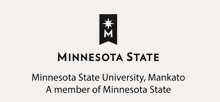Document Type
Article
Publication Date
2019
Department
Government
Abstract
Since the release of the 21st century policing report in the United States, the techniques of de-escalation have received a lot of attention and focus in political systems, policy changes, and the media. The challenge in professional peace officer education is that there is a vast range of defining de-escalation and understanding the various techniques involved, many of which are based on popular media. This research surveyed professional peace officer education university students on their definition of de-escalation and the techniques associated with de-escalation before specific communications coursework was completed. The students were then surveyed after the communication coursework was completed to determine the changes in defining and understanding de-escalation techniques. This research has found that clearly defining deescalation and emphasizing the broad range of techniques available enhances the students’ understanding and application of proper deescalation. This research demonstrates the need for professional peace officer education to move students from media concepts of law enforcement to theoretical concepts.
Publication Title
International Journal of Law and Political Sciences
Recommended Citation
Nelson, P. (2019). Changes in student definition of de-escalation in professional peace officer education. International Journal of Law and Political Science, 13(5), 731-736. Retrieved from http://waset.org/publications/10010428/changes-in-student-definition-of-de-escalation-in-professional-peace-officer-education
Publisher's Copyright and Source
Published by the World Academy of Science, Engineering and Technology, Open Science Index 149 in the International Journal of Law and Political Sciences, 2019, volume 13, issue 5, pages 731-736. Available online at http://waset.org/publications/10010428/changes-in-student-definition-of-de-escalation-in-professional-peace-officer-education
Creative Commons License

This work is licensed under a Creative Commons Attribution 4.0 International License.
Included in
Criminology and Criminal Justice Commons, Higher Education Commons, Law Enforcement and Corrections Commons


